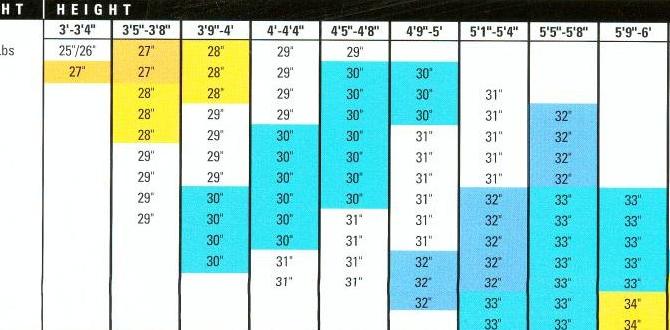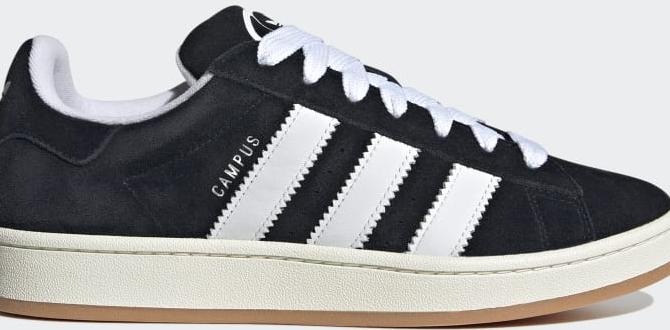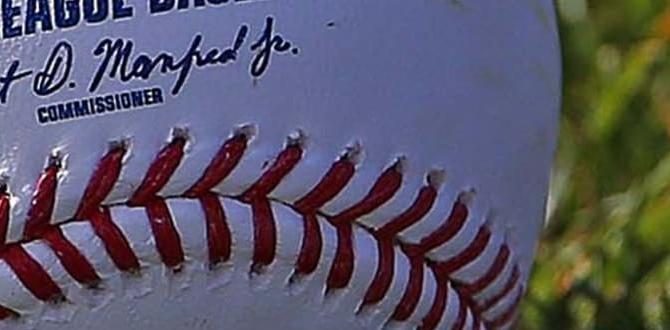This guide breaks down why a Mizuno catcher’s chest protector is crucial for safety and performance, helping you choose the right model for protection and comfort. Learn what makes Mizuno stand out and how to keep your gear in top shape.
Mizuno Catcher’s Chest Protector: Essential Gear Every Player Needs
When you’re behind the plate, you’re the unsung hero. Blocking pitches, framing close calls, and directing the defense – it’s a lot! But this crucial role comes with constant risks. Balls are fast, foul tips sting, and missed pitches can be painful. That’s where a quality catcher’s chest protector becomes your best friend. Specifically, Mizuno offers some of the most reliable options out there. We’re going to dive into why a Mizuno chest protector isn’t just an accessory, but a vital piece of equipment for any catcher looking to stay safe, perform their best, and keep playing the game they love. Let’s make sure you have the right protection.
Why a Catcher’s Chest Protector is a Game-Changer
Think of your catcher’s chest protector as your second skin when you’re crouched. It’s designed to absorb the impact of fastballs, foul tips, and errant pitches that might otherwise hit your chest, throat, or abdomen. Without it, the risk of bruises, serious injury, or even long-term pain is significantly higher. A good chest protector doesn’t just protect; it can also help you feel more confident and comfortable, allowing you to focus on making the next great play.
Mizuno has a long-standing reputation in the baseball world for creating high-quality, durable, and protective gear. Their catcher’s equipment, including chest protectors, is built with serious players in mind, balancing top-notch safety with the flexibility and comfort needed to perform at the highest level. Understanding what makes a chest protector effective is key, and Mizuno often hits all the right notes.
Key Features to Look for in a Mizuno Chest Protector
When you’re eyeing a Mizuno catcher’s chest protector, there are a few things that make a big difference. Mizuno pays attention to the details, and these features are what set their gear apart, ensuring you get the best protection and comfort on the field.
- Impact Absorption: This is the core function. Look for well-padded areas, especially over the sternum and vital organs. Mizuno uses advanced materials designed to spread and absorb impact, reducing the force felt by the player.
- Coverage Area: A good chest protector should cover your entire chest and abdomen, extending low enough to protect your gut area. It should also offer some throat protection, often through an adjustable or integrated piece.
- Adjustability and Fit: Your gear needs to stay in place, no matter how much you move. Mizuno chest protectors typically feature adjustable straps – often with Velcro closures – allowing you to dial in a snug, secure fit that won’t shift during play. This is crucial for preventing gaps where a ball could sneak through.
- Breathability and Comfort: Catching involves a lot of movement and can get hot. Look for designs that promote airflow, helping to reduce sweat and keep you more comfortable throughout the game. Some models incorporate ventilation channels or moisture-wicking fabrics.
- Lightweight Design: While protection is paramount, you also don’t want to feel weighed down. Mizuno strives to balance robust protection with a design that doesn’t hinder your agility.
- Durability: You need gear that can withstand the rigors of a season. Mizuno is known for using high-quality materials that hold up to constant use, impacts, and cleaning.
Mizuno’s Range of Chest Protectors: A Closer Look
Mizuno offers several lines of gear, often catering to different levels of play and player needs. While specific models may change year to year, the focus on protection and quality remains. Let’s touch on some common categories you might find, focusing on features relevant to beginners and intermediate players.
For the Young or Developing Catcher
For younger players or those just starting out, comfort and ease of movement are often prioritized, alongside essential protection. These models are typically lighter and designed for a less intense level of play.
- Features: Often feature simpler strapping systems, lighter padding, and a design that allows for a good range of motion. They might have a more generalized fit to accommodate growing players.
- Mizuno Examples: Look for entry-level or youth-specific lines. These are designed to provide solid protection without being overly bulky or restrictive for developing athletes.
For the Serious Player (Intermediate to Advanced)
As players advance, their needs change. They require enhanced protection, better impact management, and designs that allow for maximum flexibility and quick movements behind the plate. This is where many “Mizuno catcher’s chest protector for men” models shine, offering features for adult players.
- Features: These protectors often boast multi-layered padding for superior shock absorption, more advanced articulation for better movement, and sometimes, detachable pieces for customized protection (like a throat protector). They are built for higher-impact play and longer-term durability.
- Mizuno Examples: Mizuno’s professional or elite lines typically fall into this category. They’re engineered with professional athlete feedback and advanced materials.
Understanding Sizing and Fit
Getting the right size for your Mizuno catcher’s chest protector is critical. Too large, and it can shift, leaving you vulnerable. Too small, and it won’t offer adequate coverage. Sizing is usually based on a player’s height or chest circumference.
General Sizing Guidelines (Always check the specific product’s sizing chart):
| Size Category | Typical Height Range | Chest Measurement (Approximate) |
|---|---|---|
| Youth/Junior | Under 5’0″ | 24″-28″ |
| Intermediate/Small Adult | 5’0″ – 5’6″ | 28″-32″ |
| Adult/Medium | 5’6″ – 5’10” | 32″-36″ |
| Large Adult | 5’10” and up | 36″+ |
How to Measure:
- Height: Stand up straight and have someone measure your height from the top of your head to your heels.
- Chest: With a soft tape measure, wrap it around the fullest part of your chest, just under your arms. Ensure the tape is snug but not restrictive.
When trying on a chest protector, make sure it fits snugly around your shoulders and torso. The pads should sit comfortably over your chest and abdomen without restricting your ability to squat and move. Adjust the straps to ensure it doesn’t ride up or leave gaps.
The Importance of Proper Neck and Throat Protection
Your throat and neck are incredibly vulnerable areas. A direct hit from a baseball traveling at high speeds can be devastating. That’s why many catcher’s chest protectors, including many Mizuno models, come with integrated or detachable throat protectors.
“The throat protector is non-negotiable for any catcher,” says Dr. James Andrews, a renowned orthopedic surgeon specializing in sports injuries. “A direct impact to the carotid artery or windpipe can have severe consequences, from severe pain to life-threatening injury. Proper padding in this area is paramount for player safety.”
When choosing a Mizuno catcher’s chest protector, pay attention to the throat guard. Some are fixed, offering a consistent level of protection. Others are adjustable or detachable, allowing you to customize the fit and coverage. Ensure it stays firmly in place and provides ample padding without obstructing your view or breathing.
Materials and Technology in Mizuno Chest Protectors
Mizuno doesn’t just slap padding on a piece of plastic. They invest in technology and materials that enhance protection, durability, and comfort.
- Ethylene Vinyl Acetate (EVA) Foam: Commonly used in padding, EVA foam is lightweight, flexible, and has excellent shock-absorbing properties. Mizuno often uses strategic placements of this foam to cushion impacts.
- Polycarbonate or ABS Plastic: The outer shell of many chest protectors is made from tough plastic materials like polycarbonate or ABS (Acrylonitrile Butadiene Styrene). These materials are impact-resistant and help to distribute the force of a blow.
- Moisture-Wicking Fabrics: The lining inside the chest protector plays a big role in comfort. Mizuno often uses specialized fabrics that draw sweat away from the body, keeping the player drier and cooler.
- Ergonomic Design: Mizuno designs consider the catcher’s natural stance and movement. Articulated panels and contoured shapes help the protector move with the player, rather than hindering them.
This combination of materials and thoughtful design ensures that a Mizuno catcher’s chest protector provides a strong defense against the rigors of the game. It’s about creating gear that works with the athlete, not against them.
How to Care for Your Mizuno Catcher’s Chest Protector
Proper care will extend the life of your gear and keep it performing its best. Like any piece of athletic equipment, a catcher’s chest protector needs attention after games and at the end of the season.
Routine Cleaning (After Each Use or Weekly)
- Wipe Down: Use a damp cloth with mild soap to wipe down the exterior of the chest protector. This removes dirt, sweat, and grime.
- Interior Check: Check the interior padding for sweat buildup. You can use a separate, lightly damp cloth to wipe this down. Avoid saturating the padding, as it can take a long time to dry and may lead to mildew.
- Air Dry: Always air dry your chest protector completely. Do not put it in a dryer, as the heat can damage the plastic and foam. Hang it in a well-ventilated area away from direct sunlight.
Deep Cleaning (As Needed, or Seasonally)
- Removable Pads: Some higher-end models might have removable padding. If yours does, carefully detach the pads and clean them separately according to the manufacturer’s instructions. This often involves hand washing with mild soap and water.
- Strap Cleaning: Ensure straps, especially Velcro, are free of lint and debris. You can use a small brush to clean the Velcro.
- Storage: When not in use for extended periods, store your chest protector in a cool, dry place. Avoid extreme temperatures or stacking heavy items on top of it, which could warp its shape.
Following these simple steps will help maintain the integrity and lifespan of your Mizuno catcher’s chest protector. For more specific instructions, it’s always best to consult the care tag or manual that came with your specific model.
Mizuno Chest Protector vs. Competitors
The market is filled with catcher’s gear, and Mizuno stands out for several reasons. While many brands offer good protection, Mizuno often focuses on a blend of:
- Innovation: They consistently incorporate new materials and designs to improve protection and comfort.
- Player Feedback: Mizuno involves players at various levels in their product development, ensuring designs meet real-world needs on the field.
- Durability: Mizuno gear is generally built to last, offering a good return on investment for dedicated players.
When comparing, consider what matters most to you: is it the lightest possible weight for speed, the absolute maximum padding for comfort against hard throwers, or a balance of all factors? Mizuno aims to hit that sweet spot for many players.
Frequently Asked Questions (FAQ)
Q1: How do I know if my Mizuno catcher’s chest protector fits correctly?
A: It should fit snugly around your chest and torso without being restrictive. Ensure there are no large gaps around the shoulders or under the arms, and that the bottom extends adequately over your abdomen. The padding should cover your chest and vital areas effectively.
Q2: Can I use my Mizuno chest protector for baseball and softball?
A: While many designs are versatile, softball pitches can have different trajectories and speeds. Mizuno chest protectors are primarily designed for baseball. For serious softball play, it’s recommended to use gear specifically designed for softball, which may offer different coverage or padding styles.
Q3: How often should I replace my chest protector?
A: A well-maintained chest protector can last several seasons. However, signs that it needs replacement include visible tears, degraded padding (flattened or crumbling), straps that no longer hold securely, or if it no longer offers adequate protection or fit. If you feel more impact than before, it’s time for an upgrade.
Q4: Are Mizuno chest protectors comfortable enough for long games?
A: Mizuno designs prioritize comfort along with protection. Look for models with breathable materials, ergonomic shaping, and adjustable straps for a personalized fit. While any catcher’s gear can feel warm, their advanced designs aim to minimize discomfort.
Q5: What is the biggest advantage of using a Mizuno catcher’s chest protector over other brands?
A: Mizuno is renowned for its commitment to quality materials, robust padding technology for superior impact absorption, and durable construction. They often strike an excellent balance between protection, flexibility, and comfort, informed by extensive player testing.
Q6: Do I need a separate throat protector if my chest protector has one?
A: If your Mizuno chest protector comes with an integrated or detachable throat protector that provides adequate coverage and protection, a separate one might not be necessary. However, always ensure the throat guard is secure and covers the vulnerable area effectively. If you feel it’s insufficient or easily dislodged, consider adding a dedicated throat guard.
Conclusion
As a catcher, your gear is your shield. A Mizuno catcher’s chest protector isn’t just an optional piece of equipment; it’s an essential investment in your safety, your performance, and your ability to play the game you love without fear of injury. By understanding the features that make Mizuno stand out – from their material technology to their ergonomic designs – and by ensuring you get the right fit and take care of your gear, you’re setting yourself up for a successful season behind the plate.
Don’t let the fear of getting hit sideline you. With the right protection from a trusted brand like Mizuno, you can crouch with confidence, make crucial plays, and enjoy every moment of the game. Stay safe out there, focus on your game, and let your gear do the protecting!



